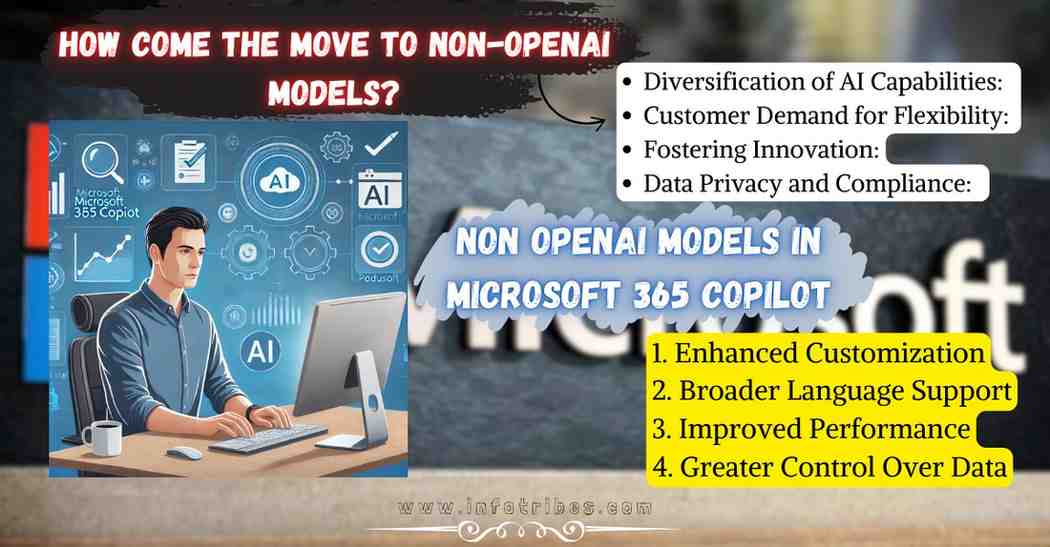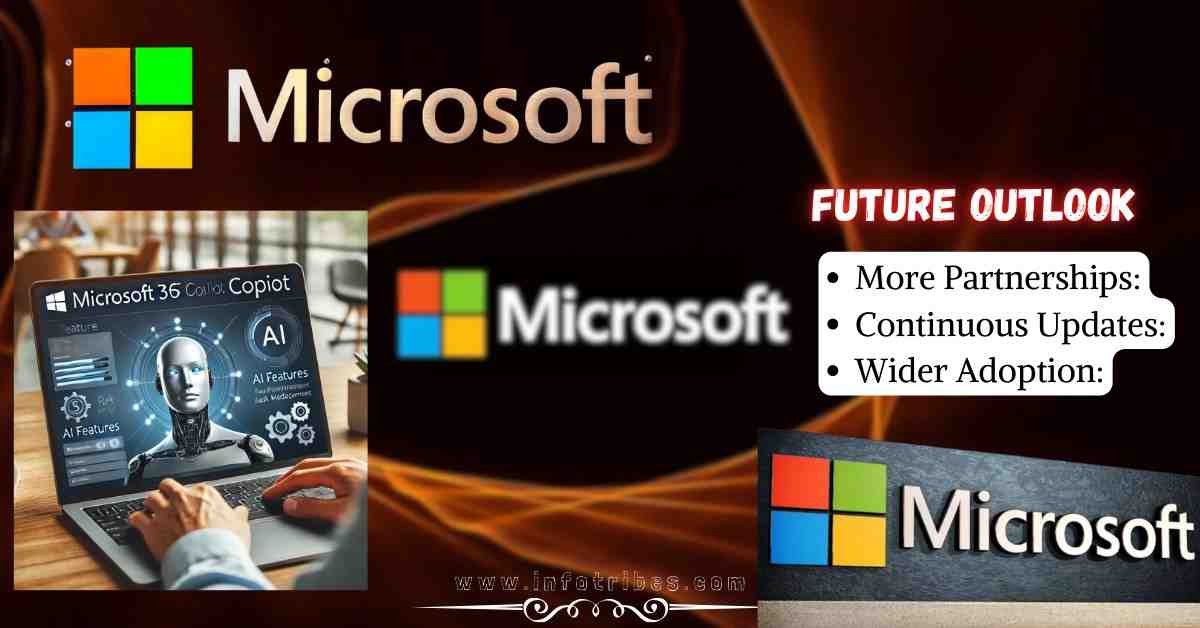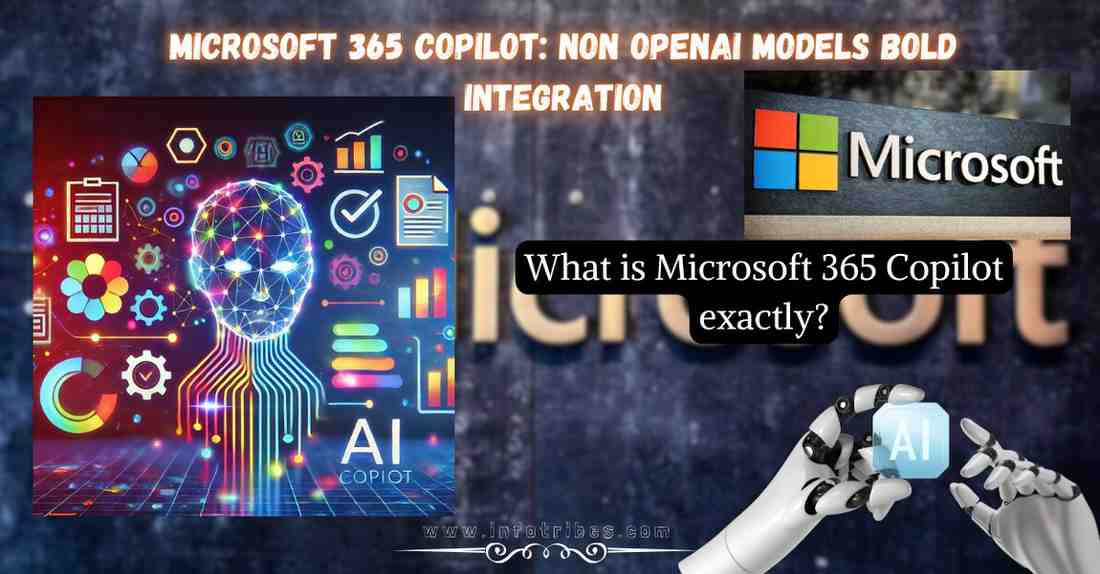Once again, Microsoft has taken a ground breaking step in artificial intelligence and productivity tools. The tech giant adds new horizons for businesses and users in search of more diverse and innovative AI-driven solutions by using embedding non-OpenAI models into Microsoft 365 Copilot. It’s going to give AI models new collaboration flexibilities within the Microsoft ecosystem with more capabilities and options for users.
What is Microsoft 365 Copilot exactly?
The AI powered Assistant that will help you do things in Word, Excel, PowerPoint, Teams and more apps, is Microsoft 365 Copilot. Advanced AI models like those used by Microsoft 365 Copilot let users’ draft content, analyses data, generate reports, pretty much effectively communicate.
Powered initially with cutting edge OpenAI GPT models, Microsoft 365 Copilot was quickly adopted for its ease of workflow. Nevertheless though, is a major evolution that marks the beginning of even more potential.

How Come the Move to Non-OpenAI Models?
Microsoft’s decision to integrate non-OpenAI models into Microsoft 365 Copilot stems from several strategic motivations:
- Diversification of AI Capabilities: OpenAI has been phenomenally powerful models, but by mas integration models from other developers, Microsoft can offer a wider choice of more special capabilities.
- Customer Demand for Flexibility: So rather than getting wet your feet in feeding baby pandas for thirty hours straight, as we have, businesses and enterprises (there are some pretty amazing ones out there) have more specific needs that could potentially be met by multiple AI models. It allows customers to get their specially tailored solutions.
- Fostering Innovation: Microsoft collaborates with developers building different AI to build a competitive and innovative ecosystem where advances in AI technology is highly encouraged.
- Data Privacy and Compliance: Other organizations may prefer to develop AI models and train models around compliance standards, if you will, or regional data privacy regulations. Such requirements can be met by non-OpenAI models.
Non OpenAI Models in Microsoft 365 Copilot
The integration of non-OpenAI models brings several new features and improvements to Microsoft 365 Copilot:
1. Enhanced Customization
- With custom models available per industry or use case, users now have a way to leverage models. As mentioned, healthcare providers for example can use models trained on medical data, financial institutions can deploy models that are optimized for analysis and compliance of risk.
You Can Also Read: TikTok US Ban Looms After Losing Critical Appeal
2. Broader Language Support
- Microsoft 365 Copilot now supports more languages and dialects, with the addition of non-OpenAI models, and their presence means that Copilot is more widely available to global users.
3. Improved Performance
- OpenAI models are just a small piece of the pie, and they aren’t designed to take over these fulltime work tasks. Non OpenAI models are meant to complement OpenAI models in working on things like Data analytics, Content generation and Project management.
4. Greater Control Over Data
- Such models also help organizations meet their needs for compliance by shoring up sensitive information from ever falling into the wrong hands.
How This Benefits Users
1. Diverse AI Ecosystem
- Microsoft 365 Copilot, with multiple AI models, gives users a rich ecosystem of different thing they need. If you are small business or a multination corporation, there is an AI model that can fit your goals.
2. Cost Efficiency
- This opens up more options for businesses to pick the best value for money AI models. Such is that it is cost effective without being inefficient.
3. Seamless Integration
- Finally, non-OpenAI models are seamlessly integrated into Microsoft 365 apps, and without disruption to the user experience. Microsoft 365 Copilot works nicely in the background whether you’re drafting a report in Word or looking over sales data in Excel.
4. Industry-Specific Solutions
- This means that the use of AI solutions for their businesses is possible through the inclusion of non-OpenAI models. It involves a targeted and improving the productivity and decision making.
Challenges and Microsoft’s Approach
While this move is undeniably bold, it comes with its challenges:
- Compatibility Issues: Technology barriers arise when you try and integrate different AI models into one over-the-air platform. And at Microsoft, this is addressed by their use of its Azure AI infrastructure to make it easy to integrate.
- Model Selection: Why the difficulty for users to choose the right AI model according to their needs? Microsoft gives customers detailed guidance and support to help them decide what to do.
- Ethical Considerations: Now several AI models are playing, so to keep ethical usage of AI, it becomes essential. Out of transparency and fairness, these models will make their way into Microsoft 365 Copilot, while the development and deployment will be transparent and fair as we go.
Microsoft 365 Copilot in Real World Applications
Microsoft 365 Copilot, enhanced with non-OpenAI models, is already being utilized in various scenarios:
- Healthcare: AI models of medical research, patient data analysis and operational efficiency are being used by hospitals and clinics.
- Education: Microsoft 365 Copilot is being used by schools and universities to improve learning experience, automate administrative task and enhance communication.
- Finance: For the past few years, financial institutions are using AI models for detecting fraud, assessing risk and performing compliance checks.
- Retail: They say AI driven inventory management, sales forecasting and personalized customer experiences are benefitting retailers.

Future Outlook
With Microsoft 365 Copilot incorporating non OpenAI models, Microsoft has shown itself to be in favor of a less OAS (open AI system) response or strategy. Looking ahead, we can expect:
- More Partnerships: We expect that more AI developers will collaborate with Microsoft to bring even more advanced models to the platform.
- Continuous Updates: Regular updates will provide users with regular functionality and scope updates for models other than OpenAI.
- Wider Adoption: Microsoft 365 Copilot’s ability with its expanded capabilities can attract a wider user base and solidify its lead as an AI powered productivity tool.
Why Microsoft 365 Copilot Is More Important Than Ever
With businesses trying to keep up with the digital world, Microsoft 365 Copilot is becoming a must tool. The flexibility and innovation within the integration of non-OpenAI models provides the ability to deal complex problems, streamline operations and manage growth.
- What’s unique about Microsoft 365 Copilot, though, is that it goes beyond technical capabilities, and is user-centric. It combines the best of OpenAI and non-OpenAI models to produce a balanced and powerful AI experience.
Conclusion
Moving forward, we fully expect that Microsoft will continue to innovate in such a way, and to set an industry first, they are bringing this all together into Microsoft 365 Copilot, a brilliant move that illustrates Microsoft’s commitment to customer first innovation. This is a win all around for Microsoft users because it introduces an entire toolbox, yes, an entire toolbox, of AI functionality to productivity tools, but at the same time it indicates a new level of engagement and hopefully new business for the AI industry.
- If you’re a business professional or a developer if you’re a decision maker, this will allow you to let the power of artificial intelligence loose and use it in ways you’ve never even been able to do before. Isn’t that exactly what Microsoft says about the 365 Copilot? It is not just a product; it is a look into what the future of productivity may become. The new innovative tomorrow has put new horizon of productivity and efficiency into visions and fusibilities as Microsoft moves to the new ways.
You Can Also Read: Ukraine War Data: Leveraging the Unbeatable Effect on AI Training
Microsoft 365 Copilot: Some FAQ’S
1. What is Microsoft 365 Copilot?
- Azure Copilot built into apps in Microsoft 365 — including Word, Excel, and Teams. You should use OpenAI and some non-OpenAI to increase your productivity and have more streamlined workflows.
2. Why are Microsoft adding non OpenAI models to 365 copilot?
- In addition to models OpenAI is already built and wants to open source, Microsoft integrated models that can address data privacy and compliance needs as well as provide innovation and customer demand for flexibility.
3. What made Microsoft 365 Copilot way better than other non OpenAI models?
- On top of that, they can’t use anything like OpenAI models that are compatible with existing dialog management code, customizable, support a larger range of languages, perform better, have more control over the data that the jobs read and write to.
4. But let’s say you use Microsoft 365 Copilot with non OpenAI models: What are the benefits?
- Beneños, it offers benefits: A blooming ecology of AI, low cost, easy integration and industry specific solutions for healthcare, finance & education.
5. Can businesses define particular non OpenAI models to use?
- What I show is that actually there is business actually can choose these these other model that is not OpenAI, that fit with industry requirements, that fit with compliance criteria, that get these customized AI driven solution.’
6. And how does Microsoft mix in our non OpenAI model?
- Lacking compatibility, you have a pick of models and using the AI in an ethical way, are the main challenges. To address these, scientific efforts to help protect our oceans with radar, sat, drilling, the bathymetry and GIS teams at Woods Hole and NSF require robust Azure AI infrastructure and user support.
7. What, then, does the future of Microsoft’s 365 Copilot with non OpenAI models hold then?
- Its future has a lot more in store than partnership plans (for AI developers), updates to make it better or greater adoption as your prime AI productivity fact.
I’m also on Facebook,, Instagram, WhatsApp, LinkedIn, and Threads for more updates and conversations.

Very Informative 😁